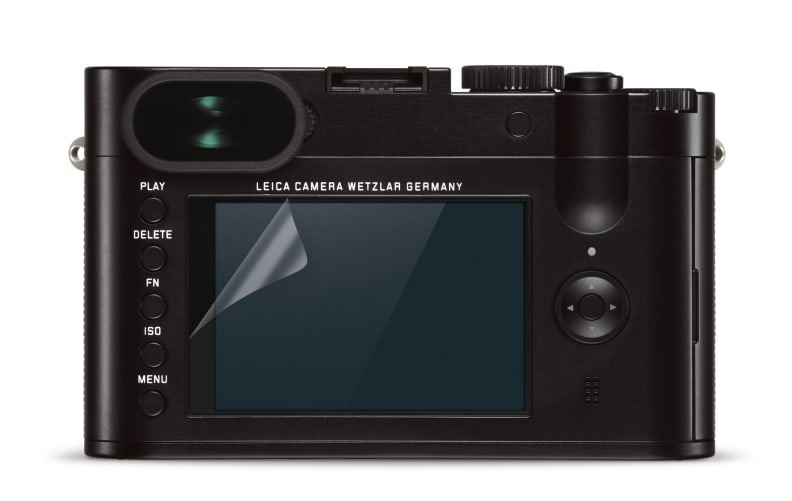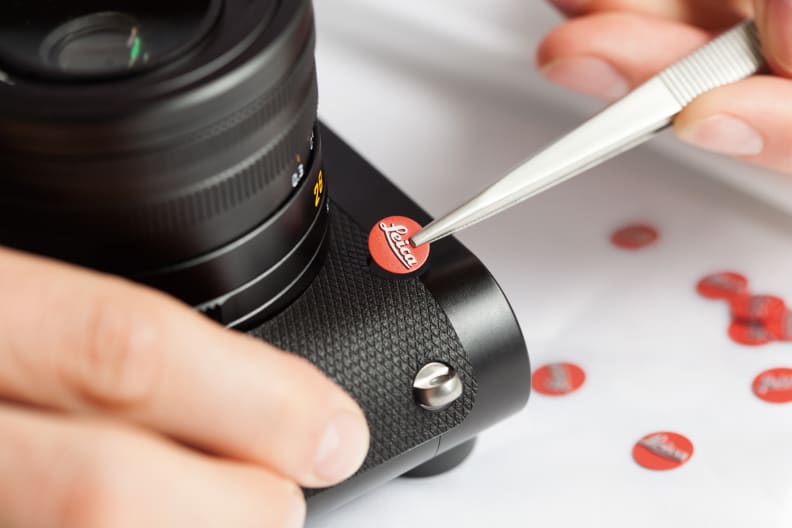The Gorgeous Leica Q Is the Mini M We've Always Wanted
Everything we love about Leicas, and (almost) nothing we don't
 Credit:
Leica
Credit:
Leica
Products are chosen independently by our editors. Purchases made through our links may earn us a commission.
Last year, when Leica debuted the compact, decidedly modern Leica T, we hailed it as a bold step for a company known for conservative design choices. Today, Leica is back with the Leica Q (MSRP $4,250), a full-frame point-and-shoot that's just as bold under the skin, but hearkens back to the look and feel that its flagship M-series cameras are known for.
The new camera, which sports a fixed 28mm f/1.7 Summilux lens and 24-megapixel full-frame CMOS sensor, looks every bit like a shrunken M-series camera. Put it next to the recent Leica M (Typ 246) and you'll find a camera with a nigh-identical menu, control scheme, and physical design.

The 28mm f/1.7 Summilux lens features autofocus, a macro mode that focuses as close as 17cm, and one of the most responsive by-wire systems we've ever used.
The body itself is large for a point-and-shoot, though it's much smaller than any M-series body. It has a magnesium alloy chassis, but—like the Leica T—its top plate is milled from a solid block of aluminum. This gives it a wonderful sense of heft and balance, though it's much heavier than just about any other "compact" camera on the market.
Various dials control exposure compensation, shutter speed, and (on the lens) aperture. The shutter speed and aperture dials each feature an "A" setting, which lets the camera take the reins. It's very similar to what Fuji has done with its X-series cameras, marrying the hands-on feel of classic film cameras to a modern digital design.
Unlike the all-manual M-series rangefinders, this camera employs a contrast-based autofocus system. It's very quick, and in our limited experience we found it to be quite accurate even in limited lighting. Notably, it's significantly better than we saw from the last full-frame point-and-shoot we got our hands on, the otherwise excellent Sony RX1.
Leica has also given the Q 1080/60p recording capability, optical image stabilization, and a 10fps continuous shooting speed. That last bit is especially noteworthy, since few full-frame cameras come close. It makes for a more dynamic, responsive camera that can adapt to even fast-moving subjects.
Of course, the camera doesn't abandon the more deliberate shooting style that makes using a Leica so enjoyable. The viewfinder is big, bright, and very sharp, making it useful for fine focus adjustments in conjunction with the camera's focus peaking feature.

The Leica Q has just the one fixed lens, but it is a useful 28mm focal length and opens all the way up to f/1.7.
While the 28mm f/1.7 lens isn't interchangeable, it has a lovely design that feels just as well-crafted as any Leica M lens. It features a large manual focus knob on the bottom, and while the focus is still by wire, it's one of the smoothest, most responsive manual focus rings we've used in some time.
{{amazon name="Leica 10771 M 24MP RangeFinder Camera with 3-Inch TFT LCD Screen - Body Only (Silver/Black)", asin="B009FQSXYA", align="right"}} The lens even has a physical ring for engaging the macro mode. In an elegant touch, this ring is coupled to the focus scale so that as you twist to the "macro" setting, a second focus scale slides into view.
We'll have a full review of the Leica Q in the coming weeks, but we can already tell you that this is a camera loaded those kind of thoughtful design touches. It makes the Q feel like a true nod to Leica's heritage, which means it's a camera even die-hard M-series shooters will find reasons to like.
The Leica Q will be available at retailers by the end of this month, according to Leica. It will retail for an eye-watering $4,250 and should be available online and at Leica stores worldwide.
Gallery

The Leica Q preserves the design language that has permeated nearly every Leica M camera for the past several decades.

With the hood attached the fixed 28mm lens extends quite a bit out from the Leica Q's body.

On the left side you can see the Leica Q's general lack of ornamentation.

From the top you can see the Leica Q borrows the rounded profile of the M-series cameras.

Around back you can see the typically spartan Leica control scheme around the high-res 3-inch, 1.04m-dot LCD.

The Leica Q wears its rangefinder heritage proudly, even as it adopts modern elements.

The dial in the upper-right corner is customizable, but it perhaps best utilized as an exposure comp. dial when not shooting in full manual.

The Leica Q feels every bit as handcrafted as other Leica models.
Related Video
{{brightcove '3394761068001'}}
